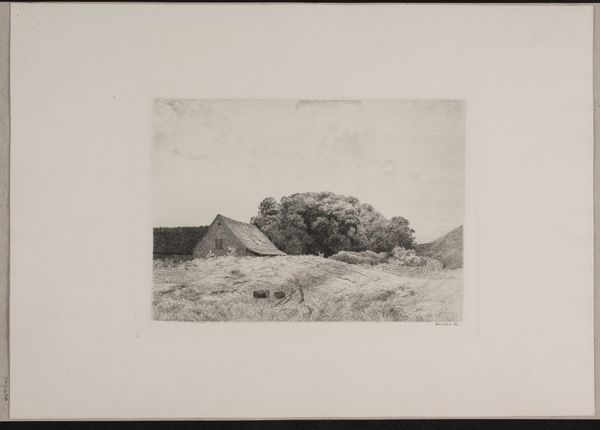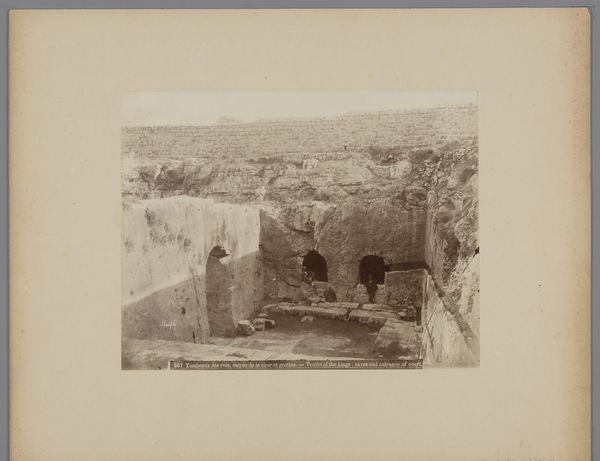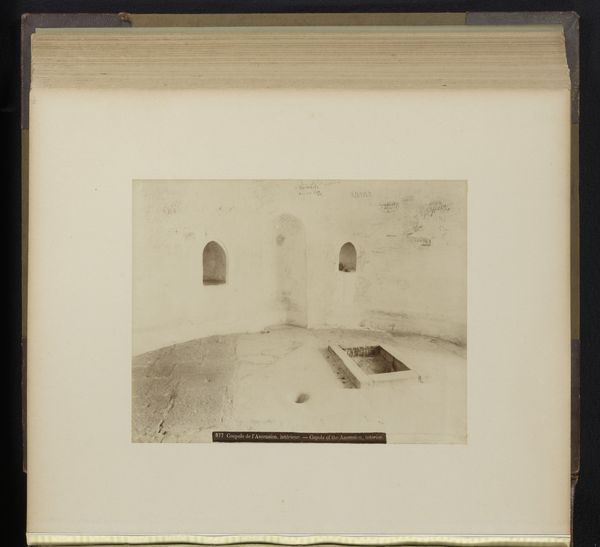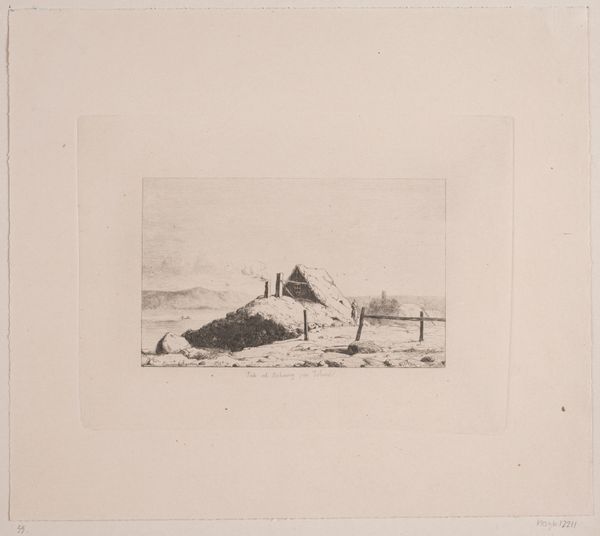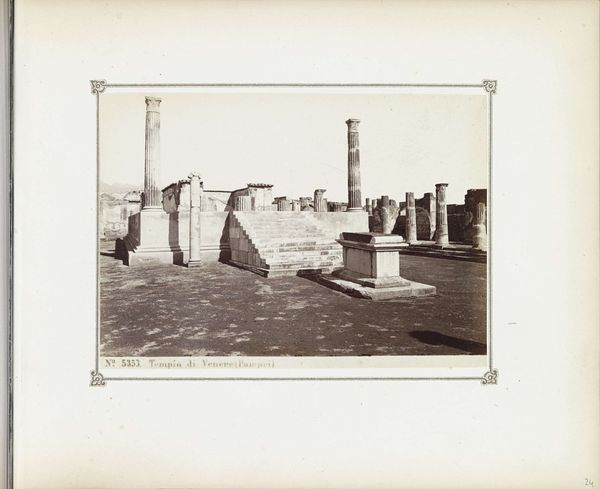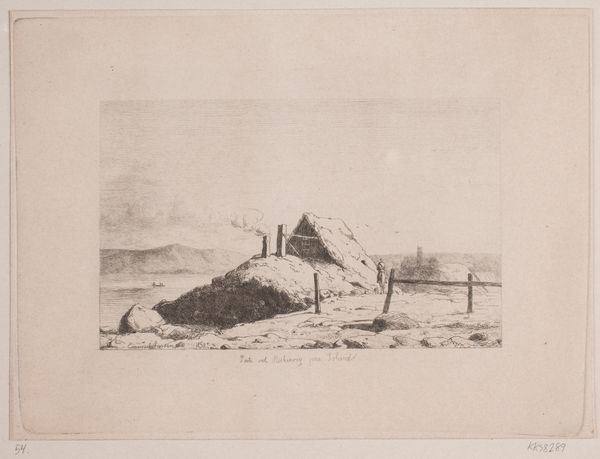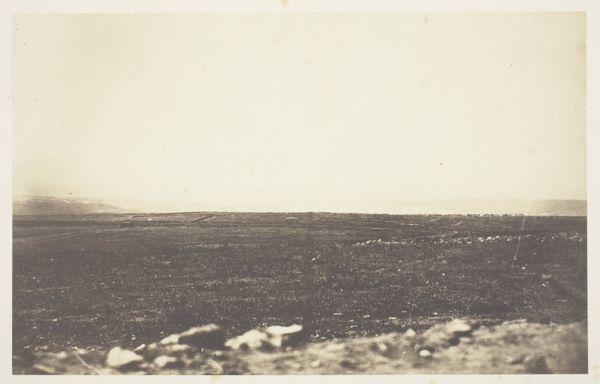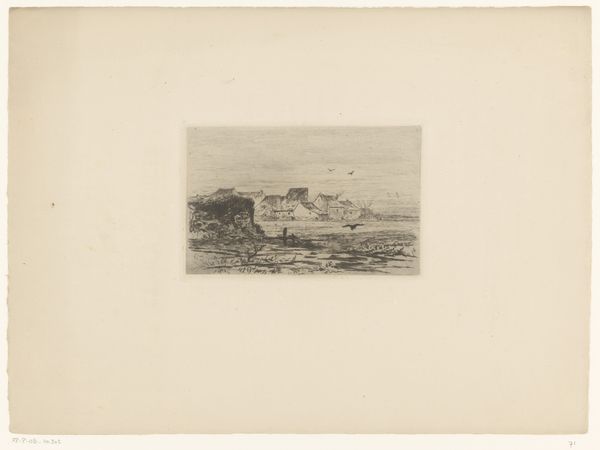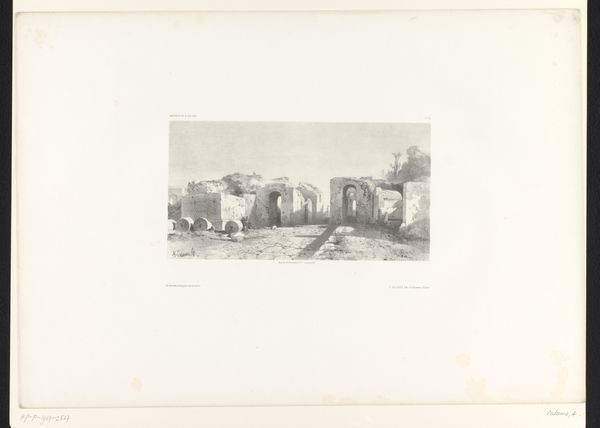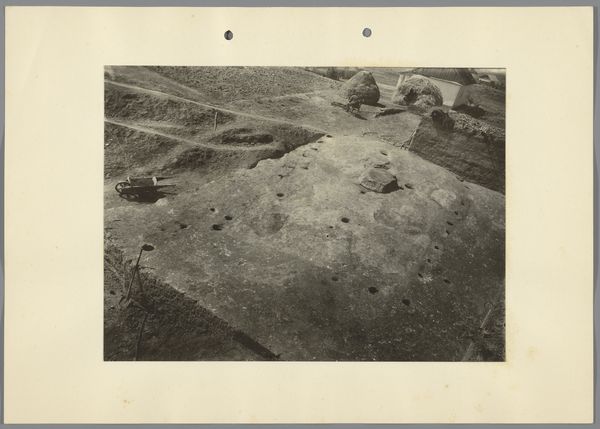
photography, gelatin-silver-print
#
toned paper
#
natural tone
#
pictorialism
#
landscape
#
photography
#
gelatin-silver-print
#
naturalism
#
watercolor
#
sea
Dimensions: height 158 mm, width 217 mm, height 207 mm, width 294 mm
Copyright: Rijks Museum: Open Domain
Curator: This gelatin silver print, titled "View of Lake Garda, Italy" comes to us from the lens of Heinrich Kuhn. Its creation dates from between 1904 and 1911. Editor: It strikes me as incredibly lonely. The monochromatic palette only amplifies the solitary figure next to the boat. Is that intentional, do you think? Curator: Kuhn was a major proponent of Pictorialism, and so definitely manipulated the photograph to achieve a desired mood and painterly effect. Pictorialism valued subjective expression, and here he clearly prioritized atmosphere and feeling over crisp detail. Consider, what socio-political anxieties about isolation and industrialization were brewing at the time? How might those feelings resonate? Editor: Interesting point. The soft focus makes it feel like a dream, or maybe a fading memory. The stark contrast between light and shadow seems laden with unspoken meaning. It recalls Renaissance chiaro-scuro but stripped of religious content. What does the lake itself represent here? Is it a threshold? A boundary? Curator: Perhaps, but it also seems important to note Kuhn’s position of privilege, one affording leisure and travel. Can we then view the ‘loneliness’ as a sort of modern malaise, removed from concerns of labour and economy? What is the class positionality of such emotions? Editor: Absolutely. You know, beyond that consideration, I also think it taps into universal feelings of introspection, regardless of context. The lake has been a potent symbol of reflection and transformation throughout art history. Looking closely, the dark form on the ground – almost menacing. It’s positioned directly across from the figure. Could this signal anxieties regarding social progress, or technological advances. Curator: Perhaps. That form creates a visual tension, unsettling the tranquil surface. So the symbolic interplay invites these more troubling undercurrents in the narrative. Kuhn is not merely presenting us with beauty. Editor: Agreed, there's beauty here, but tinged with uncertainty. Ultimately the figure remains on the edge, hesitant it seems, before some sort of transition, physical, emotional, symbolic. Curator: A quiet testament to how images, even seemingly simple landscapes, carry complexities tied to place, time and the human condition. Editor: Leaving us, perhaps, more reflective about our own relationship with the past and with nature.
Comments
No comments
Be the first to comment and join the conversation on the ultimate creative platform.
